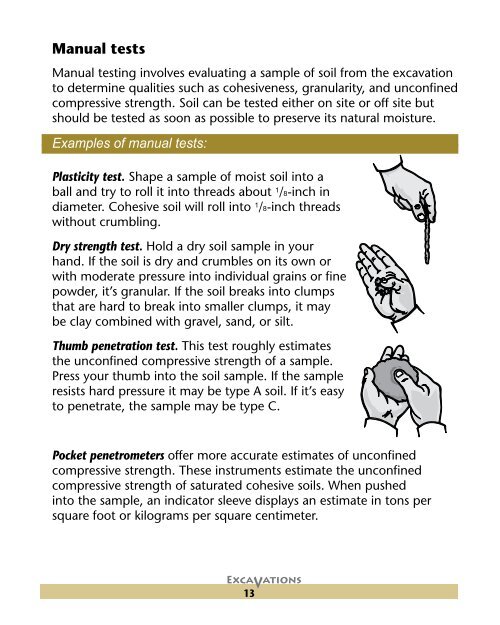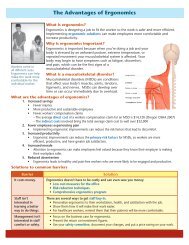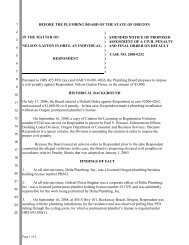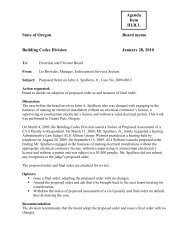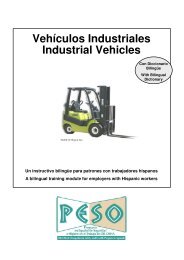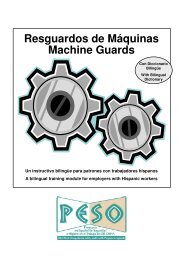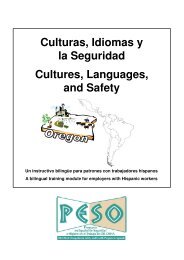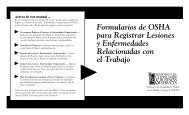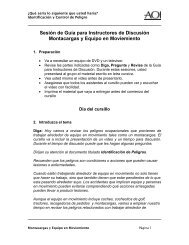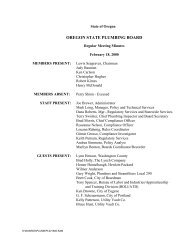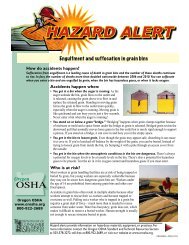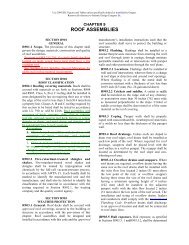ExcAVATIONs
ExcAVATIONs
ExcAVATIONs
You also want an ePaper? Increase the reach of your titles
YUMPU automatically turns print PDFs into web optimized ePapers that Google loves.
Manual tests<br />
Manual testing involves evaluating a sample of soil from the excavation<br />
to determine qualities such as cohesiveness, granularity, and unconfined<br />
compressive strength. Soil can be tested either on site or off site but<br />
should be tested as soon as possible to preserve its natural moisture.<br />
Examples of manual tests:<br />
Plasticity test. Shape a sample of moist soil into a<br />
ball and try to roll it into threads about 1 /8-inch in<br />
diameter. Cohesive soil will roll into 1 /8-inch threads<br />
without crumbling.<br />
Dry strength test. Hold a dry soil sample in your<br />
hand. If the soil is dry and crumbles on its own or<br />
with moderate pressure into individual grains or fine<br />
powder, it’s granular. If the soil breaks into clumps<br />
that are hard to break into smaller clumps, it may<br />
be clay combined with gravel, sand, or silt.<br />
Thumb penetration test. This test roughly estimates<br />
the unconfined compressive strength of a sample.<br />
Press your thumb into the soil sample. If the sample<br />
resists hard pressure it may be type A soil. If it’s easy<br />
to penetrate, the sample may be type C.<br />
Pocket penetrometers offer more accurate estimates of unconfined<br />
compressive strength. These instruments estimate the unconfined<br />
compressive strength of saturated cohesive soils. When pushed<br />
into the sample, an indicator sleeve displays an estimate in tons per<br />
square foot or kilograms per square centimeter.<br />
13


